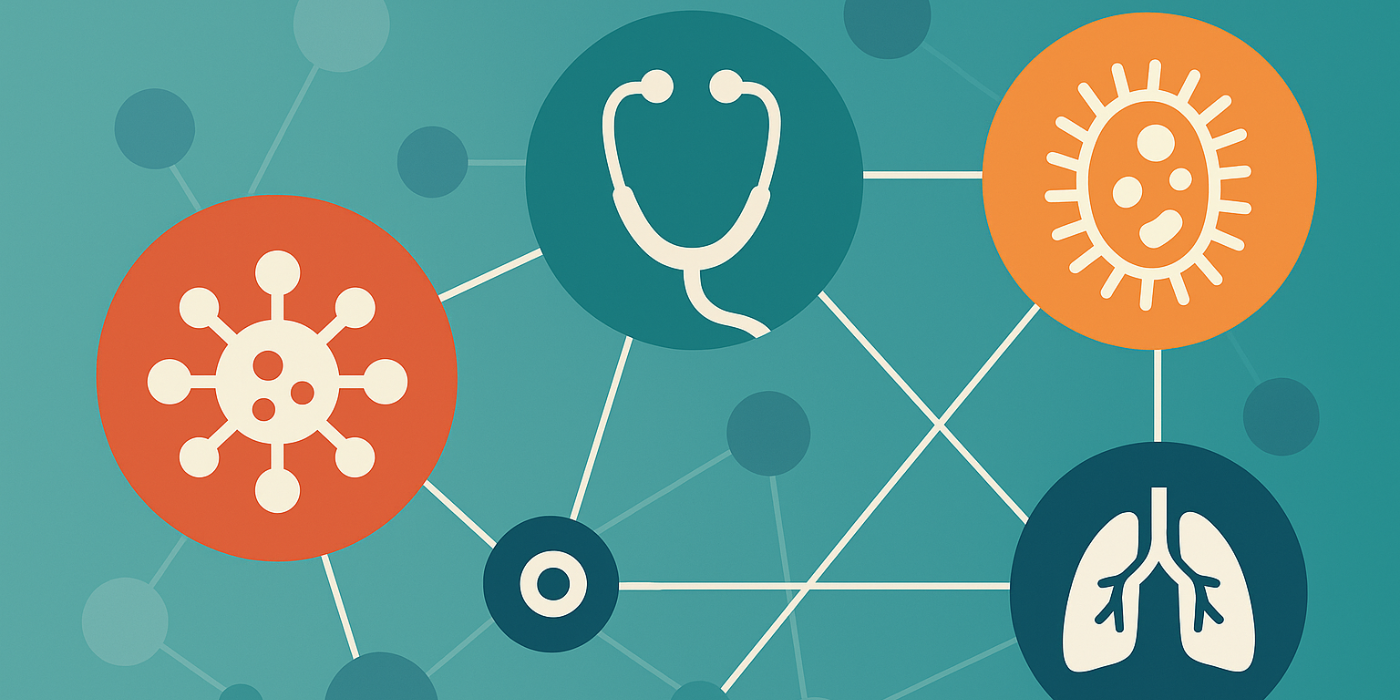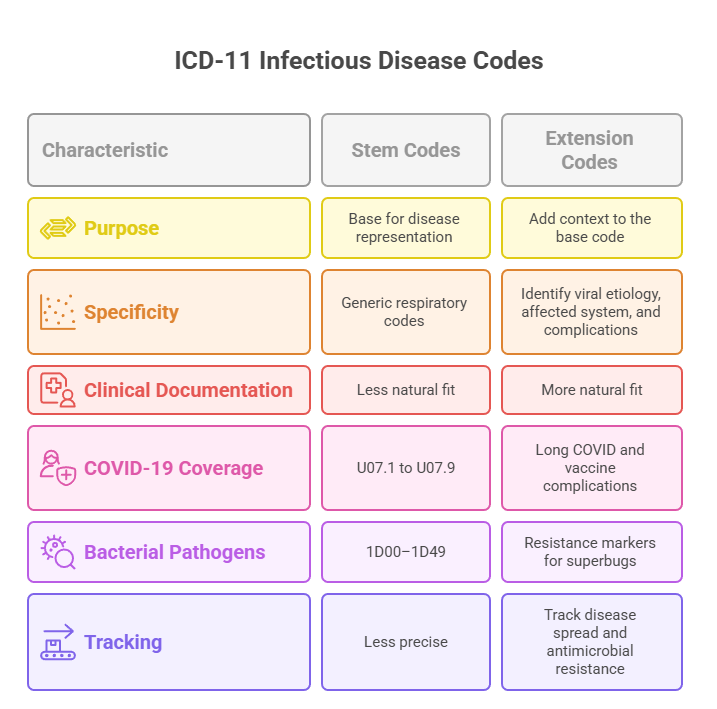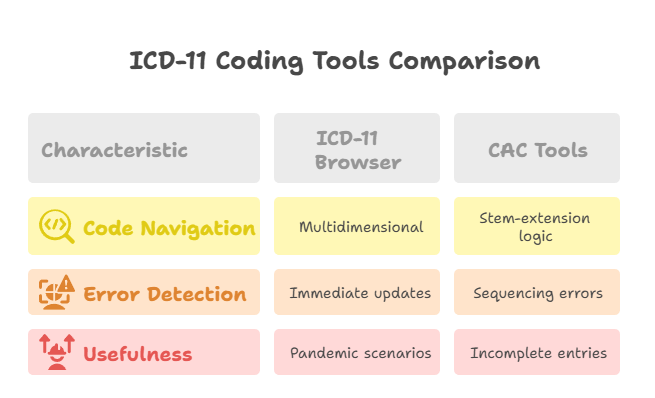Expert Guide to ICD-11 Coding for Infectious Diseases and Pandemics
The rollout of ICD-11 marks one of the most critical transitions in medical coding history—and nowhere is that more vital than in coding for infectious diseases and pandemics. In a post-COVID world, ICD-10’s outdated structures can’t keep pace with emerging viral strains, public health demands, and reimbursement complexity. ICD-11 brings a flexible, digital-first system that coders must now master to stay compliant, audit-ready, and globally relevant.
Whether it’s tracking long COVID, mapping bacterial resistance, or coding monkeypox with sequelae, the stakes have never been higher. This expert guide breaks down how ICD-11 restructures infectious disease coding, the tools and software you’ll need, and the real-world cases that demand exact documentation. For a look at how specialized training supports this transition, check out AMBCI’s CPC Certification Exam: Complete Study Guide & Resources.
Why ICD-11 Is Crucial for Infectious Disease Coding
ICD-10 Limitations During COVID-19
The COVID-19 pandemic revealed serious gaps in ICD-10’s ability to adapt to fast-evolving disease classifications. It lacked the specificity to distinguish viral mutations or post-viral syndromes in real time. Hospitals struggled with vague code sets that couldn’t differentiate between initial infection, long COVID, or multi-organ complications. For coders, this created challenges in accuracy, delayed reimbursements, and inconsistent public health reporting. Governments and payers needed data to inform emergency decisions, but ICD-10’s rigid, one-dimensional format failed to deliver the nuance.
ICD-11’s Flexible, Digital-First Structure
ICD-11 is a complete reimagining. It was designed for the digital age with stem and extension codes that allow coders to build complex, layered diagnoses. Infectious diseases with comorbidities, sequelae, and multisystem impacts can now be captured with precision. AI-driven software platforms now support ICD-11’s real-time mapping and tracking of novel viruses. This new standard supports international surveillance systems, outbreak reporting, and faster claims processing across payers. For a deeper dive into its framework, see the Guide to ICD-11 Official Coding Guidelines – Explained.
ICD-11: Built for Precision in a Post-Pandemic World
ICD-10 struggled with the speed and specificity needed during COVID-19. Vague codes led to delayed reimbursements and inconsistent public health data — costing hospitals and governments clarity.
Enter ICD-11: a digital-first system with stem + extension coding for layered diagnosis. It adapts in real time, enabling more accurate tracking of mutations, comorbidities, and post-viral impacts.
Coders using ICD-11 gain access to AI-powered classification tools and faster claims processing aligned with global surveillance protocols. It’s not just a coding system — it’s a pandemic response engine.
Structure of ICD-11 Infectious Disease Codes
New Chapter Layout and Digital Code Design
ICD-11 doesn’t just update codes — it redefines how diseases are represented. Coders now use stem codes as the base and extension codes to add context. This multidimensional structure allows for much greater specificity. For example, instead of choosing between generic respiratory codes, coders can now identify viral etiology, affected system, and post-infection complications in one chain. This system was built to reflect clinical documentation more naturally, making the coder’s role central to accurate reimbursement and reporting.
Key Code Ranges for Viral & Bacterial Infections
ICD-11’s infectious disease code ranges are meticulously organized. U07.1 to U07.9 covers different COVID-19 presentations, including long COVID and vaccine complications. The 1D00–1D49 range details bacterial pathogens and includes resistance markers for superbugs like MRSA. This allows coders to track disease spread and antimicrobial resistance with precision. These structures also align with chronic condition mapping. For context, AMBCI’s ICD-11 Codes for Diabetes Mellitus – Complete Guide with Examples illustrates how multidimensional logic is applied across conditions.
Special Considerations for Pandemic Response Coding
Capturing Novel Viruses and Emerging Diseases
The speed at which new pathogens emerge — from SARS-CoV-2 to Monkeypox — requires coders to stay constantly updated. ICD-11 enables emergency code releases by the WHO, ensuring coders can immediately apply relevant classifications. These interim codes help reflect real-world outbreaks before full documentation structures are finalized. Coders must regularly monitor WHO updates and map older codes to ICD-11 equivalents. Missing these nuances can lead to rejected claims or inaccurate data in public health registries.
Sequencing and Comorbidity Documentation
One of ICD-11’s most impactful upgrades is its support for complex sequencing. Coders are now expected to document the primary cause followed by comorbidities or complications — a crucial skill when coding pandemic-related multisystem cases. Codes also exist for scenarios like isolation, testing, and quarantine, which became central during COVID. Correct sequencing not only affects reimbursement but also impacts hospital metrics and disease tracking. To master pandemic-related claims, refer to AMBCI’s Medical Claims Submission – Complete Terminology Guide.
Poll: What’s the Most Crucial Aspect of Pandemic Response Coding in 2025?
Real-World Examples of ICD-11 Infectious Disease Coding
Case 1 – COVID-19 With Post-Viral Fatigue
A patient presents with fatigue and respiratory symptoms two months after recovering from confirmed COVID-19. Coders would begin with stem code U07.1 (confirmed COVID) and extend it using post-viral sequelae codes to reflect long COVID accurately. Attention must be paid to clinical language in documentation — “post-viral syndrome,” “persistent dyspnea,” and “residual fatigue” are important keywords.
Case 2 – Influenza with Secondary Pneumonia
Influenza A with bacterial pneumonia would involve clustering codes: one for the viral infection and another for the bacterial sequela. Coders need to reflect the infectious agent and its secondary complication. Failure to do so leads to undercoding and reimbursement loss.
Case 3 – Monkeypox Diagnosis With Rash
With emerging conditions like Monkeypox, ICD-11 allows coders to use novel viral classification codes with relevant symptom extensions (e.g., rash, lymphadenopathy). Detailed physician notes are vital for applying the correct extension codes. For more on cross-referencing infectious procedures and outpatient contexts, refer to AMBCI’s CPT Codes for Ambulatory Surgery – Essential Guide & Examples.
| Case | ICD-11 Coding Application |
|---|---|
| COVID-19 With Post-Viral Fatigue | Use stem code U07.1 for confirmed COVID-19, plus extension codes for sequelae like post-viral fatigue, dyspnea, and persistent symptoms. Ensure documentation uses precise clinical terms. |
| Influenza With Secondary Pneumonia | Apply a cluster of codes to document both Influenza A and the secondary bacterial pneumonia. Undercoding risks claim denial and data inaccuracy. |
| Monkeypox Diagnosis With Rash | Use ICD-11’s new codes for emerging conditions like Monkeypox. Include extensions for rash and lymphadenopathy. Physician detail is critical for specificity. |
Tools and Software for ICD-11 Infectious Disease Coders
ICD-11 Browser and Coding Tool
Coders transitioning to ICD-11 will find the WHO’s ICD-11 Browser indispensable. It supports multidimensional code navigation — including stem codes, extension codes, and postcoordination — all within a searchable, online interface. The browser also explains hierarchical logic and gives coders immediate access to updates, allowing faster adaptation to novel infectious disease codes. It’s especially valuable when assigning cluster codes across pandemic-linked scenarios such as viral sequelae or vaccine reactions.
CAC Tools With ICD-11 Integration
Computer-Assisted Coding (CAC) platforms are now evolving to support ICD-11's structure. These tools help automate stem-extension logic, detect sequencing errors, and flag incomplete entries during coding audits. Many EHRs are also being upgraded with ICD-11 fields. To understand how CAC supports infectious disease workflows and ICD-11 logic, see AMBCI’s Understanding Computer-Assisted Coding (CAC) Terms.
How AMBCI’s CPC + CPB Certification Prepares You for ICD-11
Full ICD-11 Integration in Course Modules
AMBCI’s CPC + CPB Medical Billing and Coding Certification includes full coverage of ICD-11 foundations. Students learn how to structure clusters, apply infectious disease classifications, and align documentation with payer requirements. The curriculum teaches how stem codes interact with extension codes, along with postcoordination logic — essential when handling pandemic-related data.
Pandemic-Response Coding Simulations
The program also includes live coding simulations based on real-world pandemic cases. Students code scenarios like COVID-19 with secondary conditions, or influenza outbreaks with comorbidities, helping them practice sequencing, documentation audits, and payer readiness. These case studies sharpen skills around emergent WHO codes.
Audit-Ready, Multi-Payer Scenarios
To futureproof your skill set, AMBCI’s dual certification teaches how to code Medicare, Medicaid, and commercial claims under ICD-11 rules. Training includes modifiers, claim edits, and denial prevention in infectious cases. For full curriculum details, visit the CPC + CPB Medical Billing and Coding Certification overview.
How AMBCI’s CPC + CPB Certification Prepares You for ICD-11
Full ICD-11 Integration in Course Modules: AMBCI’s curriculum covers the ICD-11 structure in depth — from stem-extension code logic to postcoordination and clustering. Students gain hands-on fluency in infectious disease classification aligned with real billing workflows.
Pandemic-Response Coding Simulations: Realistic case-based simulations challenge students to code COVID-19, long-COVID, and flu scenarios. Each exercise builds fluency in sequencing, documentation auditing, and adapting to WHO interim code releases.
Audit-Ready, Multi-Payer Scenarios: The course ensures graduates are fluent in ICD-11 across Medicare, Medicaid, and commercial payer systems — including modifier logic, denial trends, and audit-readiness. Learn more in the CPC + CPB Certification overview.
Final Thoughts
ICD-11 is no longer a distant upgrade — it’s the new global standard for coders handling infectious diseases, pandemics, and post-viral care. Its dynamic architecture enables more accurate surveillance, reimbursement, and policy planning, especially in high-risk or emerging health scenarios. Coders who invest early in mastering ICD-11 will position themselves as indispensable assets in any healthcare setting.
The AMBCI Dual CPC + CPB Certification doesn’t just teach coding — it teaches futureproofed strategy. From COVID to monkeypox to antibiotic-resistant infections, the program ensures you can classify, document, and defend any infectious disease claim under evolving ICD-11 rules. Whether you're preparing for a career in audits, compliance, or clinical billing, mastering this standard now will open the most doors later.
Frequently Asked Questions
-
The most significant upgrade is ICD-11’s stem-and-extension model, which allows coders to capture complex infectious cases in layers—starting with the root diagnosis and adding modifiers for cause, site, and severity. ICD-10 lacked flexibility, often forcing coders to choose between vague options or leave data out entirely. ICD-11 introduces more precise coding for emerging diseases, supports post-viral syndromes (like long COVID), and updates faster via its digital-first design. This means public health systems and insurers can track outbreaks, comorbidities, and complications far more accurately.
-
ICD-11 assigns U07.1 for confirmed COVID-19 cases, but coders must also apply extension codes for complications like respiratory failure or fatigue. For long COVID (post-acute sequelae), post-viral condition codes are used alongside U07.1 to reflect lingering symptoms. This combination captures the full patient experience and is vital for accurate billing and epidemiological tracking. Accurate documentation from the provider is critical—especially for timing of onset, persistent symptoms, and treatment response—so coders can build valid multidimensional clusters that ICD-11 supports.
-
Yes, ideally. ICD-11 requires software capable of handling stem-extension clustering, digital updates, and WHO code browsing integrations. Many EHRs and claims systems are rolling out compatibility with ICD-11, and Computer-Assisted Coding (CAC) tools are being redesigned to support its logic. If your current system still runs on ICD-10 frameworks, manual entry will be possible but much slower. WHO offers a free ICD-11 browser and coding tool, but for coders in high-volume settings, upgrading software will be essential for speed and accuracy.
-
Not yet officially. As of mid-2025, ICD-10-CM remains the billing standard in the U.S., but coders are strongly encouraged to learn ICD-11 for two key reasons: 1) its use in global clinical trials and surveillance reporting, and 2) increasing pressure for future CMS adoption. U.S.-based payers and regulatory bodies are beginning pilot programs and audit reviews using ICD-11 logic. For coders in international organizations, medical research, or public health roles, ICD-11 proficiency is already mandatory.
-
The AMBCI Dual CPC + CPB Certification offers one of the few comprehensive programs that already incorporates ICD-11 structure, infectious disease coding, and claims integration. Learners work through pandemic-focused simulations, public health classifications, and multi-payer documentation strategies. With over 200 specialty modules, the program builds fluency in coding infectious conditions across hospital, clinical, and audit settings. It’s ideal for coders ready to step into advanced roles that demand mastery of ICD-11 logic, compliance risk management, and revenue cycle integration.



